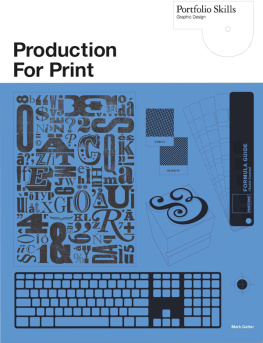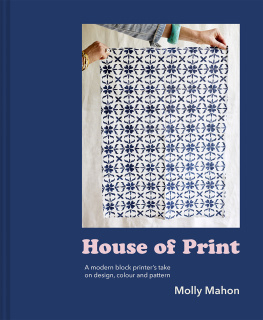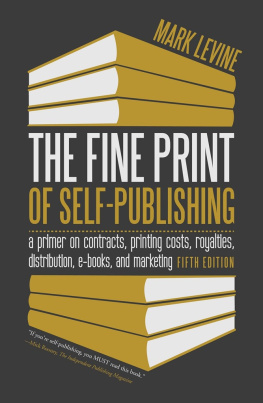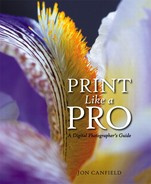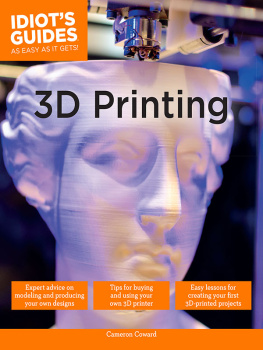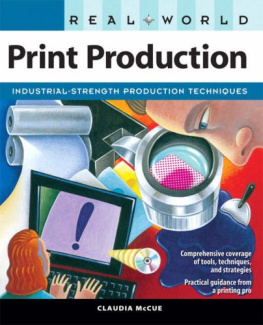Gatter - Production for Print
Here you can read online Gatter - Production for Print full text of the book (entire story) in english for free. Download pdf and epub, get meaning, cover and reviews about this ebook. City: London, year: 2010, publisher: Laurence King Publishing, genre: Romance novel. Description of the work, (preface) as well as reviews are available. Best literature library LitArk.com created for fans of good reading and offers a wide selection of genres:
Romance novel
Science fiction
Adventure
Detective
Science
History
Home and family
Prose
Art
Politics
Computer
Non-fiction
Religion
Business
Children
Humor
Choose a favorite category and find really read worthwhile books. Enjoy immersion in the world of imagination, feel the emotions of the characters or learn something new for yourself, make an fascinating discovery.
- Book:Production for Print
- Author:
- Publisher:Laurence King Publishing
- Genre:
- Year:2010
- City:London
- Rating:5 / 5
- Favourites:Add to favourites
- Your mark:
- 100
- 1
- 2
- 3
- 4
- 5
Production for Print: summary, description and annotation
We offer to read an annotation, description, summary or preface (depends on what the author of the book "Production for Print" wrote himself). If you haven't found the necessary information about the book — write in the comments, we will try to find it.
Production for Print — read online for free the complete book (whole text) full work
Below is the text of the book, divided by pages. System saving the place of the last page read, allows you to conveniently read the book "Production for Print" online for free, without having to search again every time where you left off. Put a bookmark, and you can go to the page where you finished reading at any time.
Font size:
Interval:
Bookmark:
Production
For Print
Production
For Print
Mark Gatter
Laurence King Publishing

Published in 2010 by
Laurence King Publishing Ltd
361373 City Road
London EC1V 1LR
United Kingdom
Tel: + 44 20 7841 6900
Fax: + 44 20 7841 6910
e-mail:
www.laurenceking.com
Text copyright 2010 Mark Gatter.
Mark Gatter has asserted his right under the Copyright,
Designs, and Patent Act 1988, to be identified as the
Author of this Work.
All rights reserved. No part of this publication may be reproduced or transmitted in any form or by any means, electronic or mechanical, including photocopy, recording or any information storage and retrieval system, without prior permission in writing from the publisher.
A catalogue record for this book is available from the British Library
ISBN: 978-1-85669-699-9
Design: Studio Ten and a Half
Typeface: Helvetica
Senior Editor: Clare Double
Editorial Director: Jo Lightfoot
Printed in China
Related study material is available on the Laurence King website at www.laurenceking.com
Preface
For the past twenty-five years, I have worked extensively in the commercial printing industry and also as a graphic designer, both in the US and in England. I am constantly running into other graphic designers who have a three-year degree course or similarly extensive training behind them, or who have even been working in the industry for years, but who nevertheless have little or no idea about the actual requirements of the printing process. As a result, every time they send a job to their printers, they experience nail-biting anxiety because they dont know exactly how it is going to turn out.
The gray areas that cause this anxiety include dot gain, image calibration, trapping, the use of CMYK vs. RGB, and generating error-free PDF documents for the printer.
This book explains all of these misunderstood areas, and more, in such a way as to provide an overview of the entire process, from error-free digital creation right through to commercial printing. It includes detailed instructions that will enable anyone, even complete beginners, to do the necessary work for themselves before the job is sent to the print shop.
I currently hold the ACE (Adobe Certified Expert) qualification in Photoshop, Illustrator, InDesign, Dreamweaver, and Flash, and, as well as writing books on this subject matter, I teach intensive one- and two-day training courses, covering skill levels from complete beginner to advanced, in all those applications as well as in QuarkXPress and CorelDRAW.
I also teach one- and two-day Digital Repro and Prepress courses specifically aimed at graphic designers, and offer private consultation and troubleshooting on questions relating to graphics, printing, and print production.
If you would like to know more, please visit my website ().
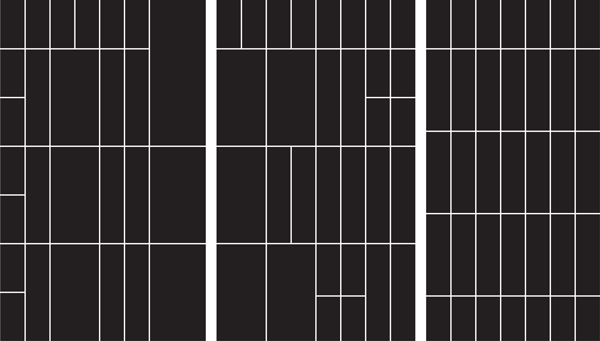
Layouts of type casesdivided wooden drawers, each compartment holding metal-block characters of a single font in a specific point size.

A computer keyboard layout: Every character you want, in all the available fonts, any time you want it.
The Evolution of an Industry |
Printing has been with us for a very long time. We can look back on the evolution of a process which hardly changed at all for several centuries, but which in the last hundred years has been transformed beyond belief. Photography replaced woodcuts; offset litho replaced letterpress; computer graphics replaced metal type, manual artwork assembly, and the printers darkroom; and now the Internet carries more and more of the information which used to be available only in print. Whether a browser window will eventually replace the printed page remains to be seen, but, for the time being at least, we still need to know how to print things, properly.
Unfortunately, developing technology has always meant that the expert knowledge of the previous methods gradually becomes relegated to specialists, museums, and history books, and this is as true of the printing industry as it is of anything else. Sometimes it doesnt really matter, but sometimes we run so fast toward the new approach that, along the way, useful information is discarded along with useless, and we find that we no longer know how to get the result we want.
So here is a short introduction to printing. I have always found that background information is useful because it provides an overview which tells me where I stand, and gives me a foundation on which I can build. I hope it will prove to be the same for you.
The Changing Face of Graphic Design
For many years, the printing industry has been divided into two separate areas of expertise. There are those who run the presses and take care of finishing; i.e. cutting, folding, binding, and so on. Other people supply the jobs to be printed: the graphic designers. Since the early 1980s, the work of graphic designers has evolved from the mechanical assembly of the basic layout, into which the printers photographic department placed the relevant images, to the production of digital files that contain absolutely everything needed for the job.
Digitization has been a major development. Yet, while the methods used to produce digital files continue to evolve at high speed, as each successive version of the various software applications is released, the designer and the printer have generally remained within their own traditionally defined areas of expertise. As a result, many of the physical requirements of the printing process are not understood by the very people who need to understand them most of allthe graphic designers.
In the early days of digital production, graphic designers often went through a period of intense anxiety while they waited to see how their work actually looked in print. Colors might have changed, pictures might look miserable compared to how they appeared on screen, and previously unseen mistakes might suddenly make themselves known.
Rather than improving over time, these problems took a serious turn for the worse in the early 2000s. Printers started to request that jobs were submitted to them as a PDF (portable document format) file rather than in the native software in which they were created. While this has made life easier for printers, PDF files are hardsometimes impossibleto edit. Printers often dont notice unwitting errors, as the nature of PDF files means that these errors are much harder to see in the first place, leaving responsibility for them squarely on the shoulders of the unfortunate designer.
Precise image calibration, dot gain,RGB vs. CMYK, screen clash, and trapping are some of the gray areas encountered by graphic designers in digital prepress. These seemingly complex processes are actually easy to deal with, but they are often not understood, and can lead to problems on the press that are expensive and time-consuming to fix.
Graphic designers who can understand and manage these areas with confidence will save time and money on everything they do. In addition, they will no longer find themselves waking up in a panic at 3 a.m., mentally going over their production process searching for possible errors.
How it All Started
The printing industry has evolved over many centuries, although for hundreds of years the printing process hardly changed. During the past fifty years, however, its acceleration has been phenomenal.
Font size:
Interval:
Bookmark:
Similar books «Production for Print»
Look at similar books to Production for Print. We have selected literature similar in name and meaning in the hope of providing readers with more options to find new, interesting, not yet read works.
Discussion, reviews of the book Production for Print and just readers' own opinions. Leave your comments, write what you think about the work, its meaning or the main characters. Specify what exactly you liked and what you didn't like, and why you think so.

